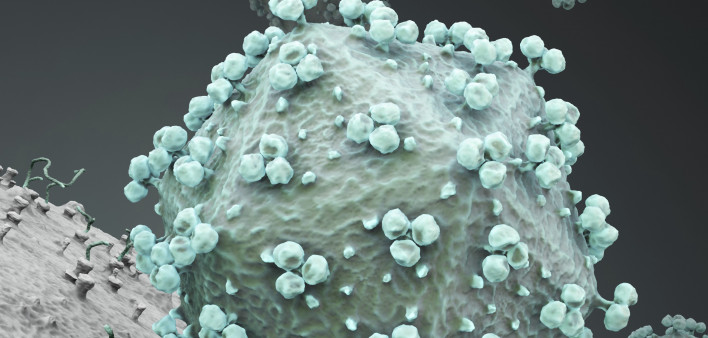Scientists have newly identified a type of immune cell that when infected with HIV is inclined to become a part of the viral reservoir, in which the virus hides from antiretroviral treatment because the cell remains in an inactive, or nonreplicating, state.
As described in PLOS Pathogens, a research team at Gladstone Institutes in San Francisco studied tissue samples taken from the tonsils.
The study was led by Nadia Roan, PhD, a visiting scientist at Gladstone who is a professor of urology at the University of California, San Francisco.
The team found that a certain class of T cells were inclined toward latent, or inactive, infection with HIV. These cells had a protein called CD127 on their surface.
Researchers had previously exposed tonsil cells to HIV and found that those immune cells with CD127 on their surface were infected with the virus but rarely produced new copies of HIV. In contrast, tonsil T cells with a protein called CD57 on their surface churned out new copies of the virus readily when infected with the virus.
In the new study, the researchers used genetic manipulation to eliminate an enzyme called SAMHD1 that cells use to prevent HIV from making double-stranded DNA copies of its single-stranded RNA within the cells. The enzyme deprives the virus of the building blocks it needs to copy its genetic blueprint.
When the investigators eliminated SAMHD1, CD127 cells did not produce new virus, whereas CD57 cells produced even more new copies of HIV than normal. This led the scientists to conclude that the CD127 cells were blocking HIV’s replication at a later step in the viral life cycle.
Seeking to answer whether HIV actually integrated its genetic material into the CD127 cells, the scientists analyzed the genome of those cells as well as CD57 cells that had been exposed to the virus. Both types of cells indeed harbored copies of the viral genome.
After provoking the CD127 cells with an agent known to stimulate immune cells, the investigators found they could get them to produce new virus. This led them to conclude that these cells are indeed reservoir cells that are largely in a latent state but can wake up at times and produce new virus.
“Our findings suggest that CD127 cells from tissues may be an important population to target for an HIV cure,” Roan said in a press release.
To read a press release about the study, click here.







3 Comments
3 Comments